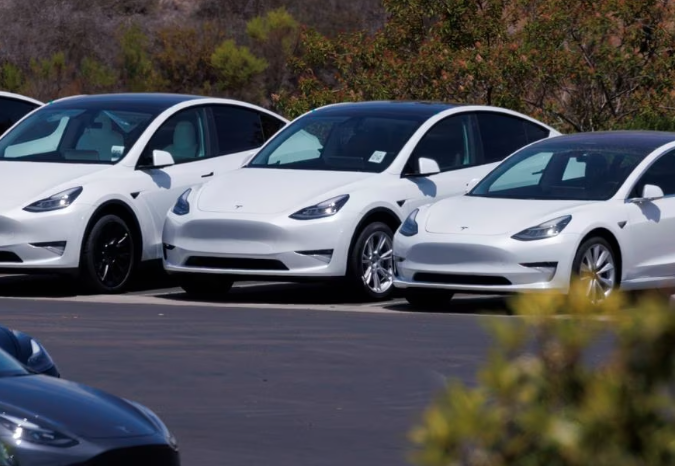Economists have long struggled to measure the informal economy, despite its significant role in global economic activity. Previous methods have relied on indirect proxies such as cash circulation or electricity usage, or on inferences based on highly structured macroeconomic models. This column introduces a new, algorithmic and easily updateable approach to estimating informal activity in Europe, utilising VAT data and consumption surveys. While the approach works particularly well for Europe, it can in principle can be extended to other countries where value added taxes are a major source of revenue.
In an age where economic researchers have become accustomed to having massive, detailed datasets, measurement of the underground, or ‘informal’, economy has proven to be stubbornly elusive. Although a precise measure is virtually impossible – those engaged in tax and regulatory evasion or illegal activity do not want to be found – the very limited number of extant estimates suggest that the informal economy is very large, averaging perhaps 17% of GDP in advanced economies and 33% in developing economies and emerging markets (see Elgin et al.’s 2021 synthesis of the literature).
Are economists right to largely ignore the informal economy in studying macroeconomic and financial policy? We think not. For starters, the world’s massive informal economy has long been the single largest source of demand for paper currency, especially large-denomination bills. But also, increasingly, it provides a transaction use case for cryptocurrencies such as Bitcoin, including both on-chain and off-chain holdings, and the same holds for stablecoins. Failure to properly measure the informal economy makes it extremely difficult calibrate business cycles, especially after the kind of seismic shocks that occurred after the 2008-09 global financial crisis and the 2020 pandemic (Ohnsorge et al. 2022). Flows in and out of the informal sector almost certainly ameliorate the effects of business shocks. In addition, for countries facing fiscal pressures, finding ways to bring the informal economy into the tax-paying entities offers a critical margin for improvement (Bovi 2010).
Until now, all measures of the informal economy have been extremely indirect, with some making use of a variety of inputs such as money in circulation (Goodhart and Ashworth 2014) or electricity usage. Others use highly structured macroeconomic models to infer missing production and consumption, which of course requires a large number of assumptions and imbues great faith in the models (Oztanali and Elgin 2012). These approaches are certainly insightful, such as the pioneering work of Friedrich Schneider and co-authors (2010, 2022). However, existing methodologies are difficult to boil down to an easy-to-replicate algorithm, and typically only allow the researcher to form snapshots for particular years.
In a recent paper (Pappadà and Rogoff 2025), we consider a new approach that can most readily be applied to EU countries. In particular, we make use of data across 20 EU countries on value added taxes collected, and then compare this with detailed data by goods categories taken from consumption surveys that are conducted by national authorities across the EU and used in forming national account statistics. Combining the national account statistics with country-specific VAT rates on different categories of goods and services (some items are excluded, some have a lower VAT rate), we are able to estimate underpayment of VAT taxes by country. Taking into account the internationally traded goods and services that are not subject to VAT taxation, and under the assumption that there is no tax evasion in government services, we are able to get country-by-country estimates of the informal economy (excluding illegal activity). A nice feature of the data is that national authorities need to follow EU-wide guidelines in collecting them, and they are available on an annual basis. (A European Commission report has also looked at VAT tax evasion, though not connecting it to the size of the informal economy; see European Commission 2020.)
We report in Table 1 the annual average estimates of our measure of the informal economy, where the acronym EVADE stands for “Evading Value Added Duty Economy”.
Table 1 Summary statistics EVADE (share of GDP)


Notes: This table reports the average level of EVADE as defined in equation (4), and the within- country standard deviation of EVADE over the period 1999-2020.
Source: Pappadà and Rogoff (2025).
Although our approach is quite data-intensive, it is also quite algorithmic and can easily be updated over time, and with more granular data (some of which is confidential and not easily obtained by researchers), can in principle be significantly refined.
Given how thoroughly different our approach is with respect to the previous literature (e.g. example Schneider and Aslani 2022, Elgin et al. 2021), the overall similarities are quite remarkable, as Figure 1 illustrates, both with respect to orders of magnitude and country rankings. EVADE does produce somewhat larger estimates for the share of the informal economy for Greece (36%), Italy (31%) and Spain (24%), though lower for other small and very open economies, including Sweden and Belgium.
Figure 1 Alternative measures of informal economy, average level (share of GDP)


Notes: This figure displays the average level of EVADE and alternative measures of informal economy such as the World Bank (Elgin et al. 2021) and Schneider and Asllani (2022) (MIMIC).
We do not necessarily regard our EVADE estimates as ‘better’ than the previous attempts at measurement. However, they certainly provide a fresh perspective, and the fact that calculations are so algorithmic is an advantage. Although we will not give details here, in our paper we go on to look at the business cycle properties of the informal economy, taking advantage of the fact that it is possible to estimate each year independently. In contrast with previous studies which generally found that the informal economy does not exhibit strong cyclicality, we find that the size of the informal economy is countercyclical, increasing in recessions, something that novelist and playwright Victor Hugo already conjectured in Les Miserables (1862):
This never deceives. When the population suffers, when work is lacking, when the trade is nil, the taxpayer resists the tax by shortage, exhausts and exceeds the deadlines, and the state spends a lot of money in duress and enforcement fees. When work abounds, when the country is happy and rich, the tax is easily paid and costs little to the state.
Our approach to measuring the informal economy works particularly well for Europe, but in principle can be extended to other countries where value added taxes are a major source of revenue.
As noted at the outset, aside from giving insight into a host of macroeconomic factors, better and more easily calculated measures of the informal economy can potentially feed into a huge variety of issues, from understanding inequality, to business cycles, to fiscal problems, to institutional strength across countries. Rogoff (2025) argues that the global informal economy is at least of the order of $20 trillion dollar worldwide, and creates fertile ground for competition between cryptocurrencies and the US dollar going forward. In any event, returning to our initial theme, it does seem a profound curiosity that economists have paid so little attention to the informal economy when it clearly seems to be such a large and variable part of overall economic activity. As a consequence, the underground economy has remained a large blind spot for macroeconomic and financial policy, and one that should no longer be relegated to the fringes of economic research.
Source : VOXeu





